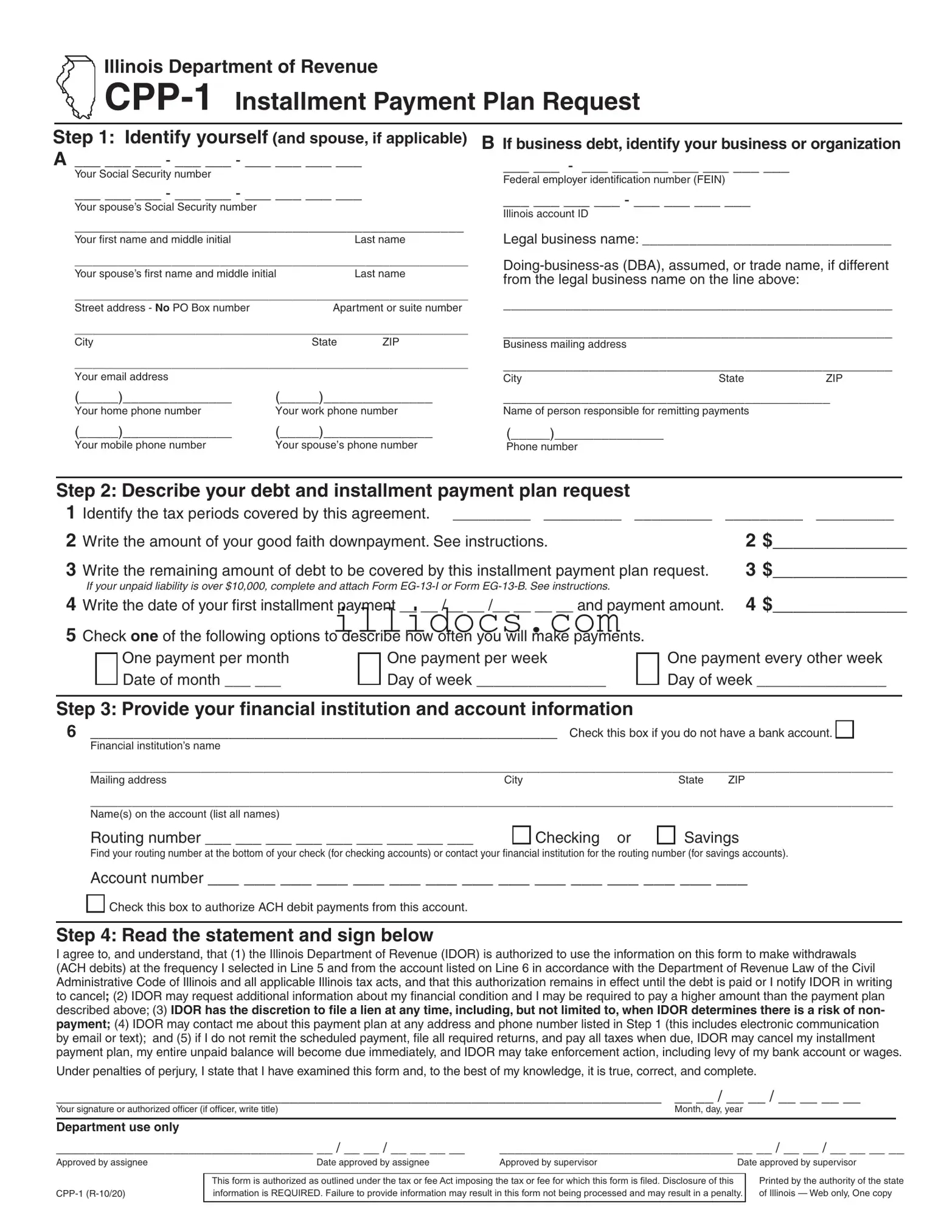What is the Illinois CPP-1 form used for?
The Illinois CPP-1 form is used to request an installment payment plan for tax delinquencies. If you are facing financial hardship and cannot pay your tax debt in full, this form allows you to set up a plan to make regular payments over time. It is an agreement between you and the Illinois Department of Revenue, helping you manage your tax obligations more effectively.
Who should file the CPP-1 form?
Individuals or businesses with tax debts that they cannot pay in full should file the CPP-1 form. This includes anyone experiencing financial hardship who wishes to enter into an installment payment plan. If you have received a bill or notice regarding your tax debt and cannot pay it, completing this form is a recommended step.
How do I complete the CPP-1 form?
To complete the CPP-1 form, you will need to provide personal information, including your name, address, and Social Security number. If applicable, include your spouse's information as well. Next, describe your tax debt by identifying the tax periods and amounts owed. Specify your good faith down payment and the proposed payment schedule. Finally, provide your financial institution details if you wish to authorize ACH debit payments. Make sure to sign the form to avoid processing delays.
When should I submit the CPP-1 form?
There is no specific due date for submitting the CPP-1 form, but it is advisable to file it as soon as you receive a bill or notice you cannot pay. Ideally, submit the form within 10 days of receiving such a notice to expedite the process of setting up your installment payment plan.
What happens after I submit the CPP-1 form?
Once you submit the CPP-1 form, the Illinois Department of Revenue will review the information provided. If additional details are needed, they will contact you. If your request is approved, you will receive a letter outlining the conditions of your installment payment plan. However, if the review indicates you can pay your debt in full, you will be required to do so. Remember, interest and penalties will continue to accrue on your unpaid tax balance until it is fully paid.
